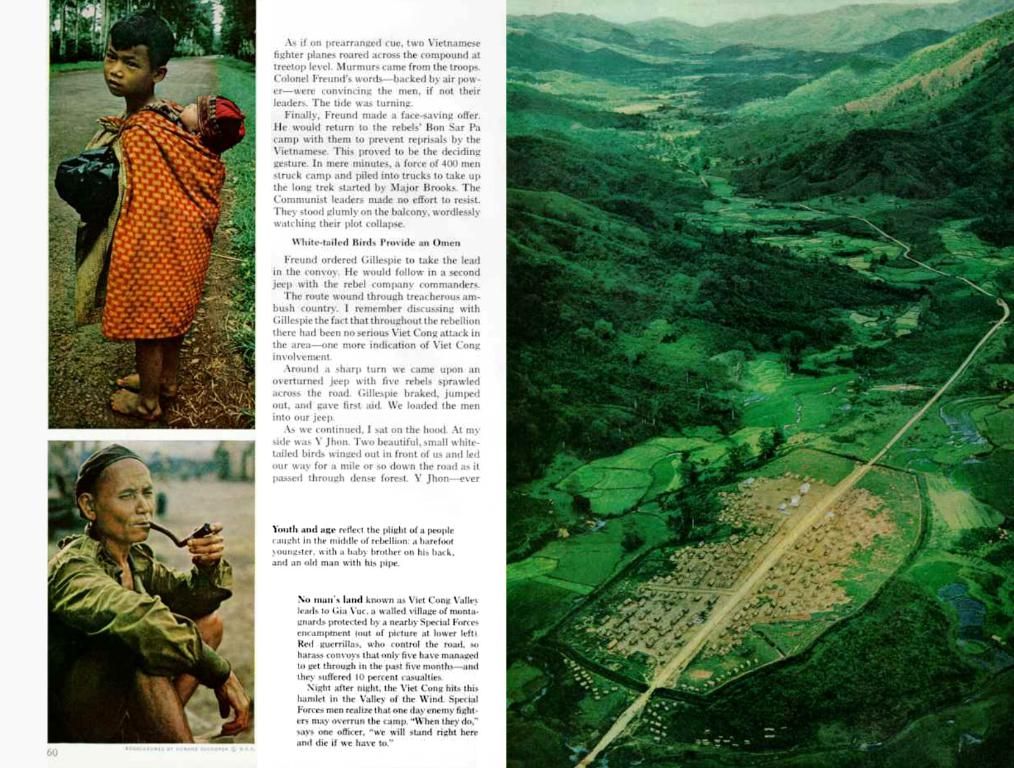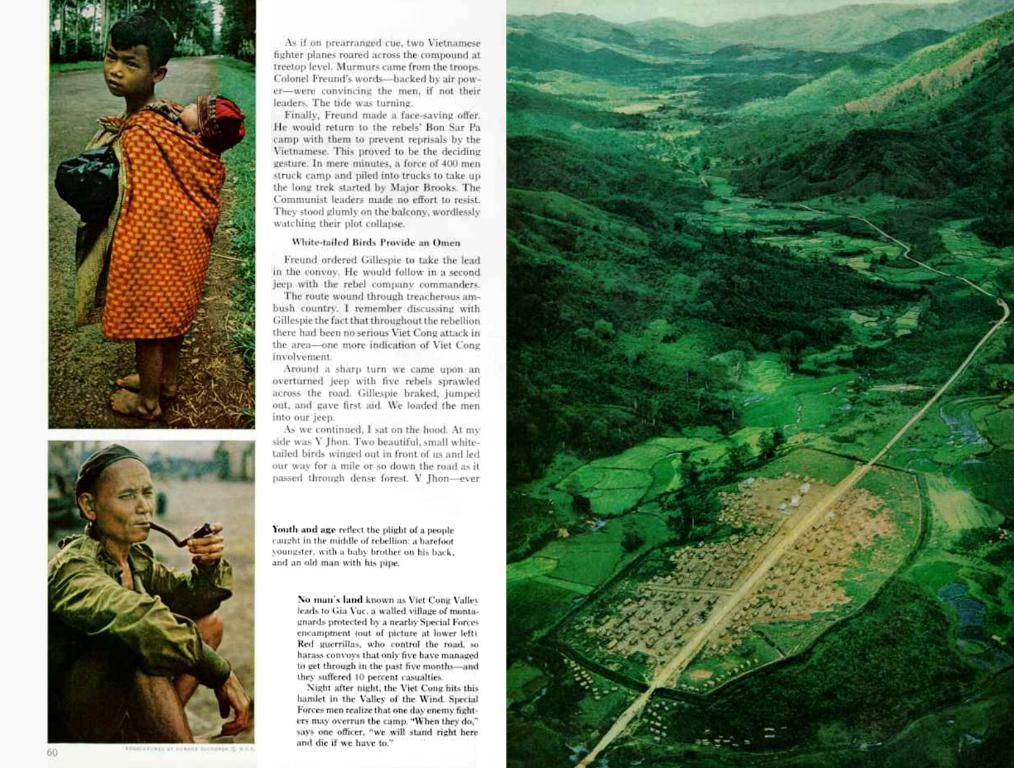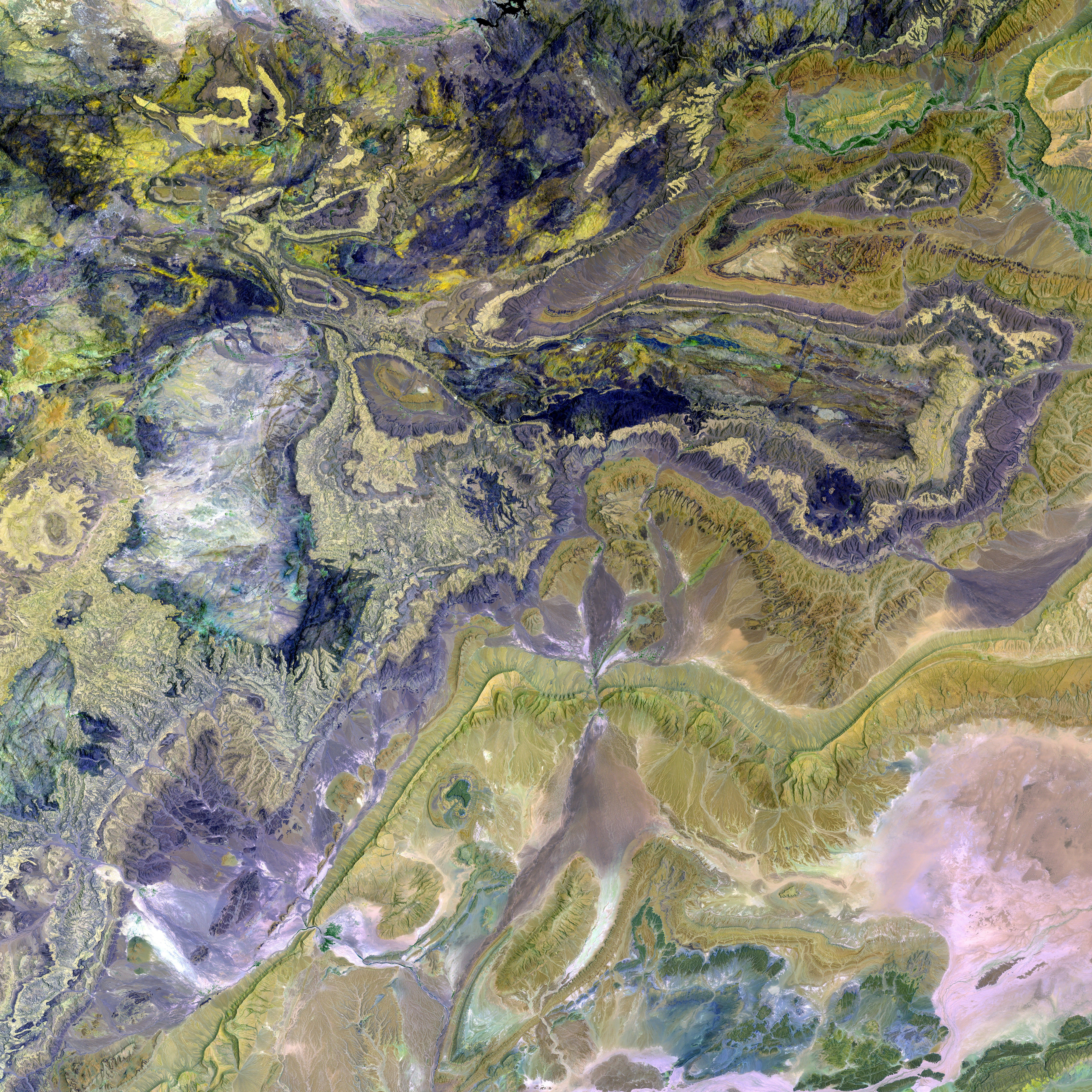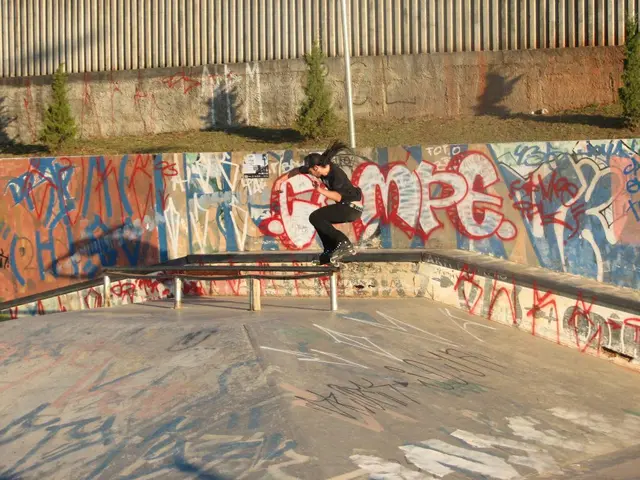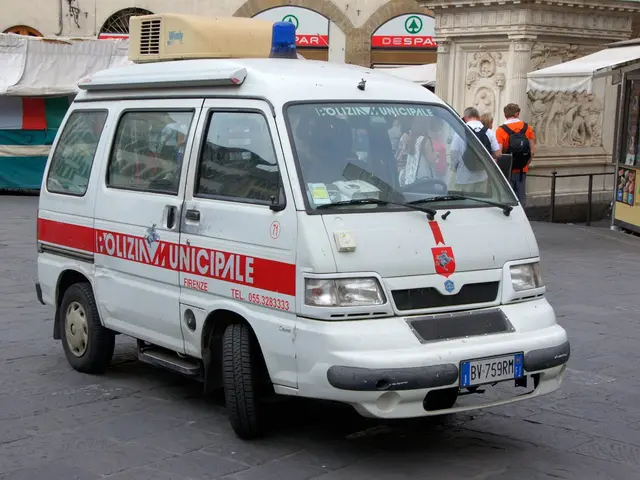Distinguished Art: 14 Notable Creators That Every Design Professional Ought to Recognize
Poppin' the Art Scene: The Rebel Crew of Pop Art Masters
Pop art's impact on the art world and the evolution of graphic design is undeniable, as these audacious painters, sculptors, and collagists revolutionized our visual culture. Known for their brash, vibrant, and humorous work, these artists combined various styles, infusing everything from street art to graphic design into their creations.
The Pop Art Revolution burst onto the scene in the mid-1950s, mirroring the era's rise of mass production, celebrity monoliths, and booming media industries. These relentless trailblazers challenged the traditional norms of the fine art world, laying the foundation for a bold, new cultural identity. Here's our celebration of 14 artists who pioneered the movement, and if you're feeling inspired, don't miss our recommendations for the best art tools.
The Pop Art Hall of Fame
01. Eduardo Paolozzi
Setting the stage for the Pop Art Revolution is none other than Eduardo Paolozzi, a Scottish artist who is often credited with establishing the movement. Although his name may not be as famous as Warhol's, his 1947 collage "I was a Rich Man's Plaything" is where the term "pop" first appeared in relation to art.
Founder of the design company Hammer Prints, Paolozzi also became a founder of the Independent Group in 1952 and was known for his wide-ranging media experimentations. During the 1960s, he pushed the boundaries of silk-screen printing with pieces that packed in references to pop culture and technology. Moreover, he designed mosaics for Tottenham Court Road Station in London.
02. Keith Haring
Hailing from Pennsylvania, Keith Haring belongs to a later generation of Pop Artists. Inspired by the New York City graffiti subculture, he began creating pop art after leaving college in 1978. Haring made a name for himself with spontaneous drawings on subway advertisement spaces, featuring chalk outlines of human figures and dogs.
Haring developed his own visual language of motifs and was commissioned to create large public murals. With a focus on social activism, he incorporated messages about anti-apartheid and safe sex.
03. Claes Oldenburg & Coosje van Bruggen
Claes Oldenburg & Coosje van Bruggen are renowned for bringing Pop Art to the people by enlarging everyday objects and placing them on top of buildings and in public spaces. "We want to communicate with the public but on our own terms, even if the images are stereotypical," Oldenburg explains.
Get the Creative Bloq Newsletter
Subscribe for daily design news, reviews, and tutorials.
"Our dialogue, which leads to the definition of a project, may take place anywhere, but we usually make decisions in our studio where we are surrounded by objects, models, notes, and drawings from the recent past and present, stimulated, whenever possible, by recollected observations of a site."
04. Robert Rauschenberg
Robert Rauschenberg is considered to have preempted the Pop Art movement with his early works, incorporating non-traditional materials and objects in innovative combinations. His 'Combines' collages, starting in the mid-1950s, often blurred the line between painting and sculpture. Rauschenberg worked with photography, printmaking, performance, and was awarded the National Medal of Arts in 1993. He passed away in 2008.
05. Richard Hamilton
Regarded by many as the father of British Pop Art, Richard Hamilton created a series of famous works during the 1950s and 60s. Perhaps his most famous is his 1956 collage "Just what is it that makes today's homes so different, so appealing?" It is an exploration of the quintessential Pop Art themes: newspapers, comics, advertising, appliances, food, packaging, television, and movies.
06. Yayoi Kusama
Yayoi Kusama, the Japanese Pop Art Artist, transcended the movement as she took inspiration from surrealism, art brut, minimalism, abstract expressionism, and often employed repetitive patterns to deal with mental illness. Her work went beyond canvas and sculpture with her happenings and installations.
One notable event in the 1960s saw participants painted with brightly coloured polka dots, which she would become known for. Her fame declined after she moved from New York back to Japan but enjoyed a revival after her 1993 Venice Biennale installation of small pumpkin sculptures in a mirrored room.
07. Roy Lichtenstein
Lichtenstein, born in New York, became a leading figure in the Pop Art movement with paintings of comic strip cartoons, washing machines, and baked potatoes. Considered classics of that era, his works based on an image from a 1962 issue of DC Comics' "All-American Men of War" are particularly notable.
08. Peter Blake
At first glance, "On the Balcony" looks like a collage, but it's actually a painting. Peter Blake, a leading British Pop Artist of the 1950s, combined the themes of the movement with fine art in his work, often incorporating imagery from advertisements and collaged elements.
Blake also co-created the sleeve design for the Beatles' 1967 album Sgt. Pepper's Lonely Hearts Club Band, the covers for two of The Who's albums, and the Live Aid concert poster.
09. Evelyne Axell
Evelyne Axell, a Belgian artist, was one of the most influential female Pop Artists. Known for provocative paintings focusing on female sexuality, she employed vibrant enamel paints on plastic silhouettes of women.
Axell's breakthrough series was "Erotomobile" (1964-66), which consisted of images of nude women with automobile parts. Oxley has been compared with revolutionary female artists like Yayoi Kusama and the French sculptor Niki de Saint Phalle.
10. Andy Warhol
Warhol is the most famous Pop Artist today due to his prints of celebrities and branded products. It was in the early 1960s that he began to experiment with reproductions based on mass-produced images from popular culture, such as Campbell's soup tins and Coca Cola bottles.
11. David Hockney
Although British artist David Hockney is most often associated with sun-drenched landscape paintings, his early work, which featured a somewhat humorous mood, vibrant colors, and magazine-style images, quickly gained him a reputation as a leading pioneer of Pop Art.
Developing his style in the 1980s, Hockney began to produce photocollages, initially using Polaroid prints and later of 35mm color prints. Hockney's diverse skills include printmaking, painting, drawing, filmmaking, and theater design.
12. James Rosenquist
James Rosenquist is an American Pop Art Artist who made large works often by collaging elements from advertising and consumer culture. He drew on his background in sign painting and commercial art to explore the role of advertising and consumer culture, depicting popular cultural icons and mundane everyday objects.
These themes often caused Rosenquist's work to be compared to works by Andy Warhol, but Rosenquist also employed elements of surrealism, including fragments of advertisements or seemingly random objects in uncanny juxtapositions to convey the overwhelming nature of mass media.
13. Robert Indiana
Robert Indiana is known for his bold, graphic typography, particularly his "LOVE" image, which began as a personal card but gained wide acclaim when it was exhibited at the Museum of Modern Art in 1966.
In 1966, Indiana worked with Marian Goodman of Multiples, Inc. to make a "LOVE" sculpture in aluminum, and in 1970, he completed his first monumental "LOVE" sculpture in Cor-Ten steel. The sculpture has also been recreated in other languages. Indiana also created bold works using other short, simple words, including "EAT", "DIE", "HUG", and "ERR", exploring the power of language and drawing on vernacular highway signs.
14. Kiki Kogelnik
The Austrian painter and sculptor Kiki Kogelnik may be less famous, but her striking compositions were highly influential, with their flat graphic geometries and vibrant color palettes. She often represented the human form in her work, including her "Womans Lib" series of self-portraits with enormous scissors cut-outs beneath her feet.
Her "Hanging" series of vinyl silhouettes, traced from the outlines of friends like Lichtenstein and Oldenburg, draped over clothes hangers were intended as a commentary on the fluidity of identity.
For additional artistic inspiration, check out our recommendations for the best art books. We also have a guide to famous graphic designers.
- The term "pop" first appeared in relation to art in Eduardo Paolozzi's 1947 collage "I was a Rich Man's Plaything," marking a significant step in setting the stage for the Pop Art Revolution.
- Eduardo Paolozzi, a Scottish artist credited with establishing the Pop Art movement, was also the founder of the design company Hammer Prints and a founder of the Independent Group in 1952.
- Paolozzi pushed the boundaries of silk-screen printing with pieces that packed in references to pop culture and technology during the 1960s.
- Another renowned Pop Artist, Keith Haring, started his career by creating pop art after leaving college in 1978, drawing inspiration from the New York City graffiti subculture.
- Haring made a name for himself with spontaneous drawings on subway advertisement spaces, featuring chalk outlines of human figures and dogs.
- Claes Oldenburg & Coosje van Bruggen's contribution to the Pop Art movement lies in their large-scale enlargement of everyday objects and placement in public spaces, communicating with people on their own terms.
- Oldenburg's creative process involves designing projects at the studio, surrounded by objects, models, notes, and drawings, often inspired by recollected observations of a site.
- Robert Rauschenberg is considered to have preempted the Pop Art movement with his early works, incorporating non-traditional materials and objects in innovative combinations.
- Richard Hamilton, regarded by many as the father of British Pop Art, created a series of famous works during the 1950s and 60s, including "Just what is it that makes today's homes so different, so appealing?" in 1956.
- Yayoi Kusama, a Japanese Pop Art Artist, transcended the movement, taking inspiration from surrealism, art brut, minimalism, and abstract expressionism while employing repetitive patterns to deal with mental illness.
- Another noteworthy Pop Artist, Roy Lichtenstein, became known for paintings of comic strip cartoons, washing machines, and baked potatoes, with works based on images from a 1962 issue of DC Comics' "All-American Men of War" being particularly notable.
- David Hockney, although most often associated with sun-drenched landscape paintings, began his career with a reputation as a leading pioneer of Pop Art, featuring vibrant colors and magazine-style images in his work.
- James Rosenquist made large works often by collaging elements from advertising and consumer culture, using his background in sign painting and commercial art to explore the role of advertising and consumer culture.
- Robert Indiana is known for his bold, graphic typography, particularly his "LOVE" image, which gained wide acclaim when it was exhibited at the Museum of Modern Art in 1966.
